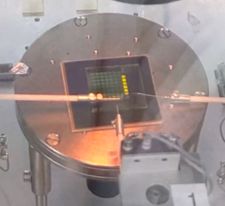High-Performance Circularly Polarized Organic Light-Emitting Diodes Incorporating Innovative All-Organic Chiral Emitters.
Hasselt | More than two weeks ago
Development of novel all-organic chiral emitters leveraging triplets via thermally activated delayed fluorescence to boost the performance of circularly polarized organic light-emitting diodes.
Over the last two decades, electroluminescence from organic chromophores has evolved into a flourishing industry, notably in the mobile phone market. Strategic materials and device research efforts have been key to this commercial success. Most recent endeavors aim at emissive triplet state harvesting without the use of (toxic) heavy metals to afford more efficient and sustainable organic light-emitting diodes (OLEDs). When applying chiral organic emitters, circularly polarized (CP) electroluminescence can be achieved, with exciting prospects for power-efficient OLED screens, 3D displays, optical data storage, and optical spintronics. However, this field is still in its infancy and the development of efficient all-organic chiral emitters and devices thereof comes with considerable scientific challenges. In particular, the electroluminescence dissymmetry factor (i.e. the ratio between the intensity difference of left- and right-circularly polarized and the total generated electroluminescence) lags behind.
In this Ph.D. project, this challenge is tackled by the judicious - computationally guided - design and synthesis of innovative chiral chromophores, particularly focusing on materials leveraging triplets via (multiple resonance) thermally activated delayed fluorescence (TADF). The project strongly leans on previous and ongoing efforts within the imo-imomec host group on TADF material development.[1,2] The candidate will focus on the synthesis, purification, and chiral resolution of innovative enantiopure TADF emitters. Moreover, all novel fluorophores will be thoroughly characterized from a structural and photophysical/chiroptical point of view and then implemented in state-of-the-art CP-OLEDs to afford detailed structure-property relations and finally aim for record-high luminescence dissymmetry values.
The Ph.D. project will be conducted as part of an interdisciplinary and multicultural team of highly skilled scientists who work toward next-generation, sustainable, optoelectronic devices based on alternative (organic) semiconductors. The research will be performed in the newly built ‘Science Tower’ and the imo-imomec Physics/Engineering building located on the campus of Hasselt University in Diepenbeek (Belgium). These facilities contain state-of-the-art laboratories and equipment for both the material and device aspects of this Ph.D. project.
[1] Brebels et al., J. Mater. Chem. C 2024, 12, 9255 – DOI: 10.1039/D4TC01214C.
[2] Cardeynaels et al., J. Mater. Chem. C 2022, 10, 5840 – DOI: 10.1039/d1tc04913e.

Required background: Chemistry, Materials Science or Equivalent
Type of work: 75% experimental, 15% computational, 10% literature
Supervisor: Laurence Lutsen
Daily advisor: Wouter Maes, Koen Vandewal
The reference code for this position is 2025-181. Mention this reference code on your application form.
